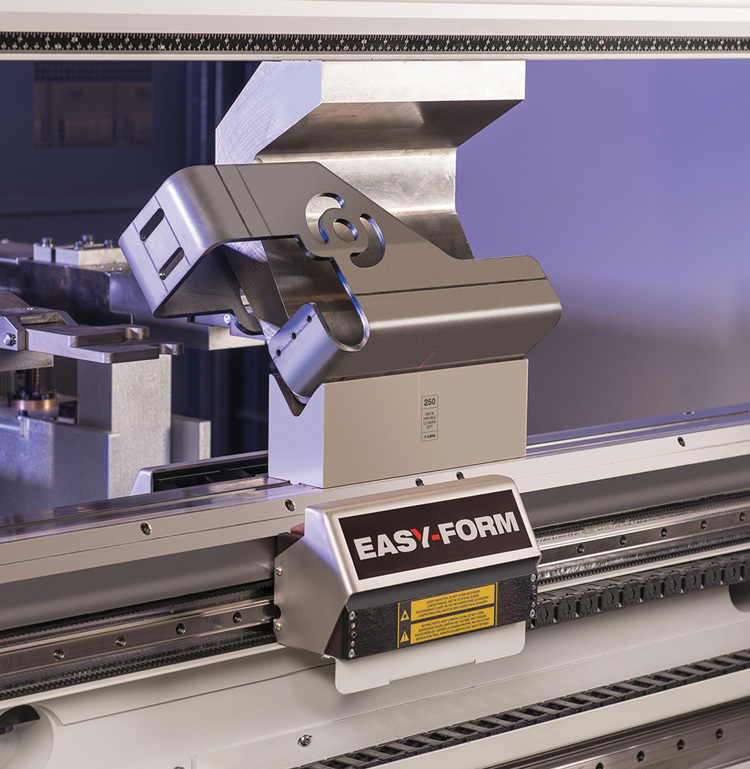
hen prospective hires are brought in to tour G.A. Braun’s plant, many are struck by the general idea of how things are made. After touring the floor, they often view the machinery being used “as cool and exciting and they want to learn the technology behind it,” says Chad Perfetti, fabrication manager of the Syracuse, New York-based industrial laundry machine manufacturer.
After years of laying out sheet metal by hand and using various small tools to cut out part profiles, G.A. Braun’s leadership realized it should consider investing in laser and CNC press brake technologies. Perfetti’s crew found LVD Strippit’s team to be knowledgeable as well as close by in Akron, New York. “The layout of the laser with load/unload automation had a footprint that didn’t take up too much floor space,” he adds.
G.A. Braun purchased an Orion laser and a PPEB 150, which allowed the company to program the press brake offline. “Training involves typing in the job number and the machine tells the employee what tooling to use and where to put it,” Perfetti says. “It then sequences through the job and the software also senses and calculates factors like material springback.”
 [We can] move any employee and set them running the press brake.
[We can] move any employee and set them running the press brake. 
EFL uses two laser scanners placed at the front and back of the press brake’s table, below the die and mounting surface. “Easy-Form allows adaptive bending with real-time feedback to account for strain hardening and springback in all materials,” Wolf says. EFL uses V-die reference instead of sheet reference and can measure up to 100 samples per second between the die and the sheet.
LVD’s patented V-dies and Stone radius V-tooling provides accurate tool alignment and smoother materials flow.
The LVD CNC crowning system is automatically controlled via the machine control and compensates for the bed deflection and the beam under different bending forces. “The LVD crowning system is custom made for each machine,” Wolf says. “Associated components are machined and finished based on the geometric measurement between the beam and lower frame and other machined parts of the press brake.”




With increased vertical integration, more machine purchases followed. “We realized the combination of laser machines and press brakes saved us resources and we’ve been able to bring in more outside work,” Perfetti says. “Training time has decreased so that it is easier to cross train into the sheet metal department because the press brakes are user friendly.”
According to Wolf, customers increasingly wish to integrate software to the shop floor level. “Finding intelligent bending solutions offline helps reduce overall setup times drastically, achieve small batch runs faster, reduce scrap and enhance overall capability,” he adds.
LVD’s CADMAN-B software is integrated with the machine control, allowing for a timely “art to part” process. The Touch-B control database is composed of empirically derived data, considered more accurate than theoretical data, says Wolf.
Bending parameters are automatically stored, which are cross-referenced against bending data experience on specific tools and materials.
“The control also has 2D and 3D simulation of the bending sequence to assist the operator with positioning of the part,” Wolf says. “Having these elements makes developing new jobs easier and faster.”
LVD’s Enhanced Energy Reduction System uses turbo hydraulics, a standard feature of the Easy-Form press brake, resulting in the reduction of energy consumption by 30 percent. “This exclusive pump design regulates flow rates to achieve optimal machine need, avoiding unnecessary oil heating and energy waste,” according to Wolf. “No energy is lost when the machine is holding the ram in position under pressure or when operating at low capacity.”

